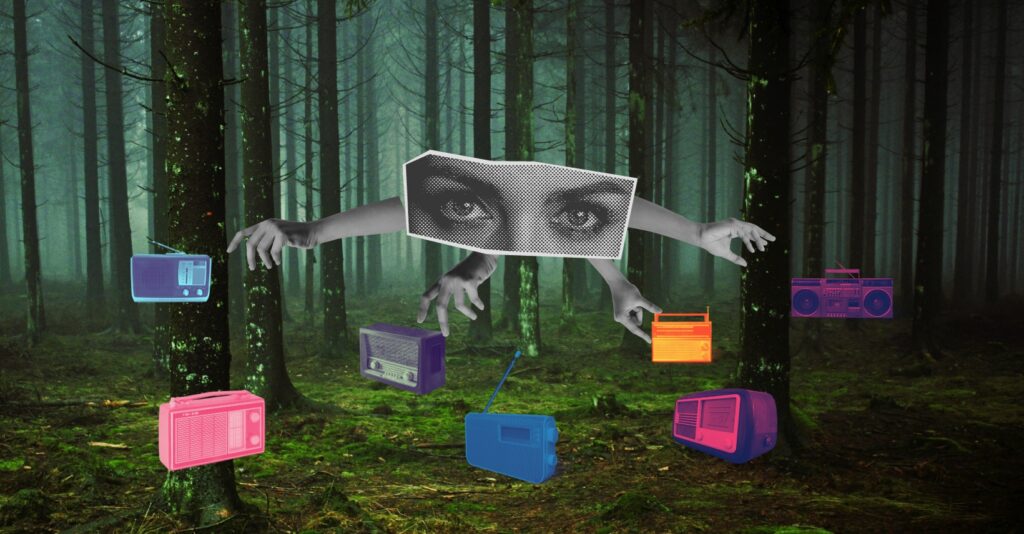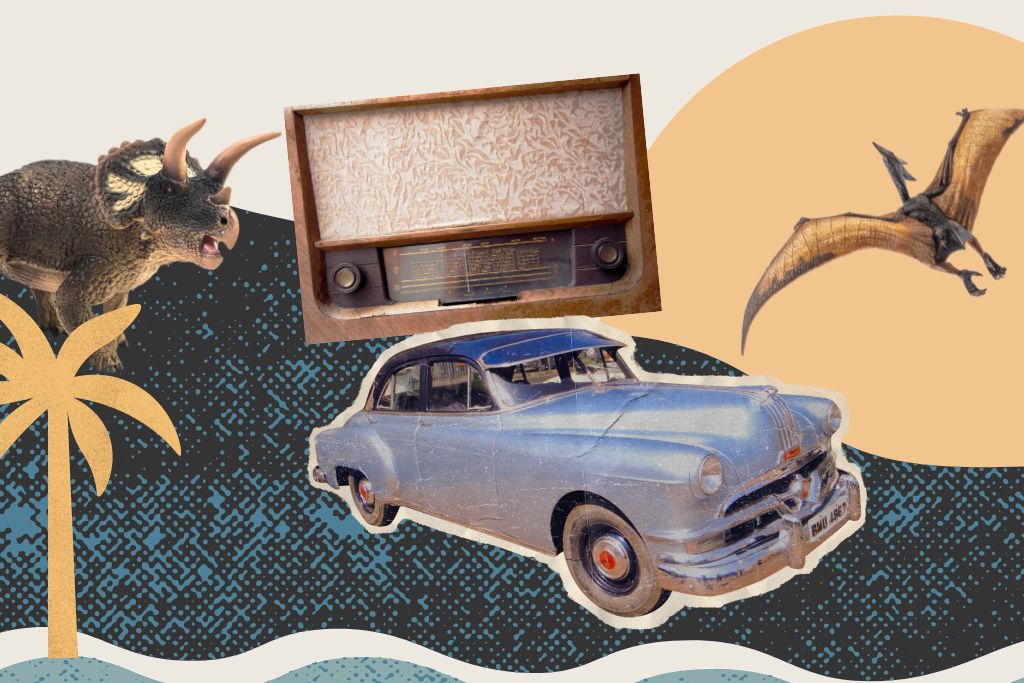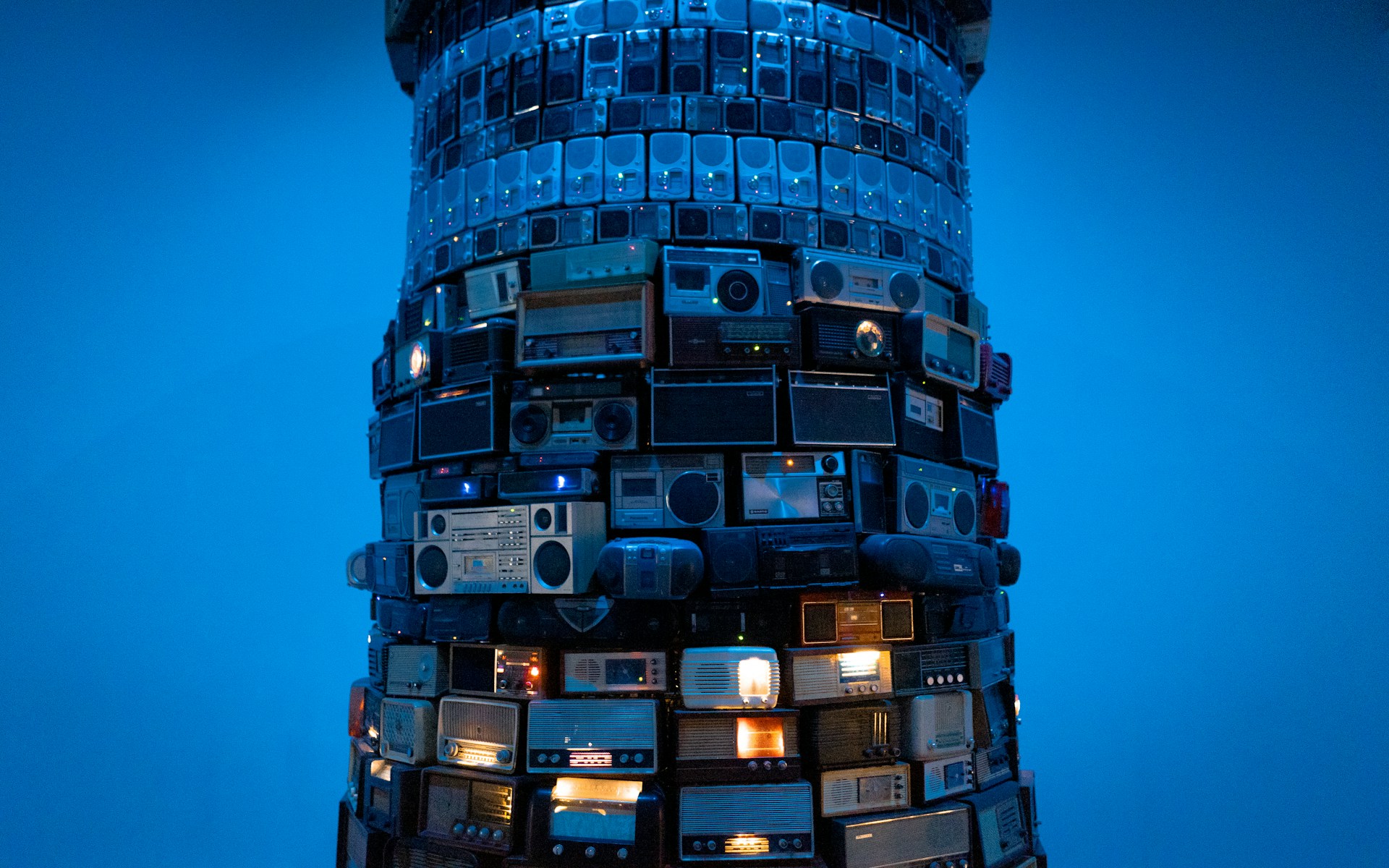Radio has come a long way before making its way to our smartphones. Join us on an extraordinary journey through time. In the end, we’ll take a look at how we listen to the radio today.
Fortunately, from the very beginning, radio has walked hand in hand with technology. It never lagged behind and always adapted cleverly to its listeners. It’s also worth noting that radio remains the most affordable and accessible medium in the world.
Where did radio come from?
Transmitting information to a wide audience was a huge challenge at the end of the 19th century. Newspapers, large or small, were in circulation, but people still had to wait at least a day for the latest news.
This kept engineers of the time up at night, making it only a matter of time before someone stepped forward with a groundbreaking solution.
Nikola Tesla and his invention
Nikola Tesla, the Serbian-American “intellectual giant” born in Croatia, spent years working on a radio-controlled device. When he unveiled it to the world in 1900, many predicted great success and a life of wealth for him. Not everything went as expected…
His invention did, in fact, revolutionize the world, but Tesla himself passed away alone in a New York hotel on Orthodox Christmas in 1943.

Towards the end of his life, Tesla spent plenty of time in court, fighting for the rights to his invention against the Italian physicist Guglielmo Marconi.
We could easily write a multi-volume literary work about Tesla’s discoveries, achievements, and struggles — and still not cover it all.
The Golden Age of Radio
Tesla ultimately won his case in the U.S. Supreme Court, which granted him the patent rights to radio — unfortunately, only after his death. But leaving that story behind, the real breakthrough had happened: broadcasting live to a wide audience was finally possible.
By the mid-1930s, radio receivers were present in more than 60% of American homes. Families would gather around the radio on work-free Sunday afternoons to listen together.

The growing popularity of radio in the 1930s surpassed all expectations. It was The Golden Age of Radio.
Radio broadcasts no longer only delivered local news but also featured thematic shows and live sports coverage. It’s also worth mentioning that music was first transmitted over the radio waves in 1906 — though this was just an experiment by Reginald Fessenden. Over time, however, music became a permanent fixture on the airwaves.
Radio changed beyond recognition
A radio receiver had to be carried into the home by several pairs of hands at the beginning of the 20th century. It was a large, cabinet-like box with dials.
The bulky size wasn’t much of an inconvenience — after all, people back then weren’t traveling between continents or countries as they do today.
Pocket radio
When listeners “hit the road,” they needed something much smaller than the wooden box that received radio waves. The radio had to leave the cabinet and somehow fit in a backpack.
This shift happened in the 1950s. A bit earlier, a clock was added to radios — practical, right? Today, we can only admire the unique designs of some vintage portable radios from back in the day.

Over time, sound quality also became important, which led to radios being equipped with better and better speakers. In the 1980s, Boom Boxes came onto the streets, especially in American cities.
The radio expansion was in full swing, and even then, we were light years ahead of smartphones, radio apps, Bluetooth speakers, wireless headphones, and so on.
Finally, internet radio
In the early 1990s, radio, continuing to evolve alongside developing technology, proudly entered a new era — one in which it could be broadcast digitally and over the internet.
In 1993, internet radio was launched. From that moment on, we could talk about traditional radio, which uses radio waves for transmission (AM, FM, MW), and radio over the internet. Of course, one doesn’t exclude the other, as most stations are now available online.
A year before radio entered the internet, the first SMS was sent (1992). After that, the floodgates opened, and mobile phones became an extension of our hands. If radio had a human form, it would probably have said, “Perfect timing!”

At first, mobile phones had “almost” nothing, but the radio was already there, just in its traditional form. It was received through an antenna, which in this case was a pair of connected headphones.
Radio on mobile phone
Later mobile phones boasted several additional features (voice recorder, simple games, calculator). Not like today’s smartphones, which serve as portals to another, almost unreal world.
None of the great minds of the last century, including Tesla, could have ever imagined that one day radio would be available on some thin, glowing device. And yet, here we are!
Listening to the radio has never been as simple and comfortable as it is today.
Stations from all over the world in one smartphone
Year after year, the number of radio stations multiplies like mushrooms after rain. There are so many of them, that it’s hard to keep track. In 2000, there were almost 44,000 active AM and FM stations (according to the CIA World Factbook) — and that’s not even counting the internet stations!
Since we’re on the mushroom theme, any experienced forager takes one medium-sized basket into the forest. Carrying several containers would be simply inconvenient and cause unnecessary confusion.
The same goes for listening to the radio on smartphones. We also need a “basket” that makes the whole process easier.

Thousands of stations in one app
Imagine having 20 favorite radio stations, and for each one, you have to install a separate app. We can guess what your face would look like! Thankfully, once again, a perfect solution has appeared (a “basket”) tailored to the needs of today’s listeners.
A radio app acts as an aggregator, uniting thousands of radio stations worldwide — even from tiny islands you never knew existed. It includes both internet-only stations and FM, AM, and DAB stations that have moved online to stay connected with their audiences.
Listening to the radio has never been as easy and convenient as it is today.
Just type a radio station name into the app’s search bar, and voilà — magic happens. You can add your favorite stations for quick access. You can listen to the radio on your smartphone’s built-in speaker or connect it to an external Bluetooth speaker or headphones, which, finally, are just headphones and not antennas.
Radio apps are equipped not only with a simple, convenient search feature but also with additional, useful functions, such as radio alarms, sleep timers, equalizers, reminders for shows, favorite station lists, colorful themes, and station catalogs (music genres, location). A little something for all the gadget lovers out there.
Music radio stations and more
Finally, an Important Point. It’s not just the appearance of radio receivers that has changed over the past few decades. Our expectations of radio stations themselves have also grown. We now seek diversity — sometimes we just want music without any comments, and other times we crave news or specific shows.
In the vast radio ocean, there are countless types of stations. Some only play music (pop, rock, ambient, techno, etc.), while others offer the latest news or live sports coverage. There’s something for everyone.
Radio in the car
We won’t dive into the long and complex history of automobiles. But we can assume that when people switched from horse-drawn carriages to cars, they needed a companion to make the journey more pleasant and keep them informed about what was happening in the country. Radio was the perfect candidate.

The first attempts to install a radio receiver in cars (1920s, USA) were like trying to fit an elephant into a chocolate box. The device had to be “slightly” reduced in size, and it was successfully done.
By 1931, some car brands (such as Packard, Chrysler, Ford, and Lincoln) had radios equipped with tuners to receive medium waves (MW). Several decades later, car radios stopped being a luxury and are now a standard feature.
Radio on Android Auto
It goes without saying that traditional radio has its limitations, especially during long drives. You never know when a station will stop coming through, start crackling, and you’ll have to search for it again. It’s neither pleasant nor responsible.
Today, more and more cars come equipped with a dedicated interface displayed on the car screen — Android Auto. It allows for easy handling of calls, and safe use of apps (including radio apps), and consequently, lets you listen to radio stations from around the world in such a simple way.
Manual station searching and saving them in the receiver’s memory have become a thing of the past. A few commands, and voilà. Our radio companion will go with us practically anywhere.
We hope you enjoyed this journey through the history of radio, you smiled at least once while reading.
Cover photo: Zoltan Fekeshazy/Unsplash

